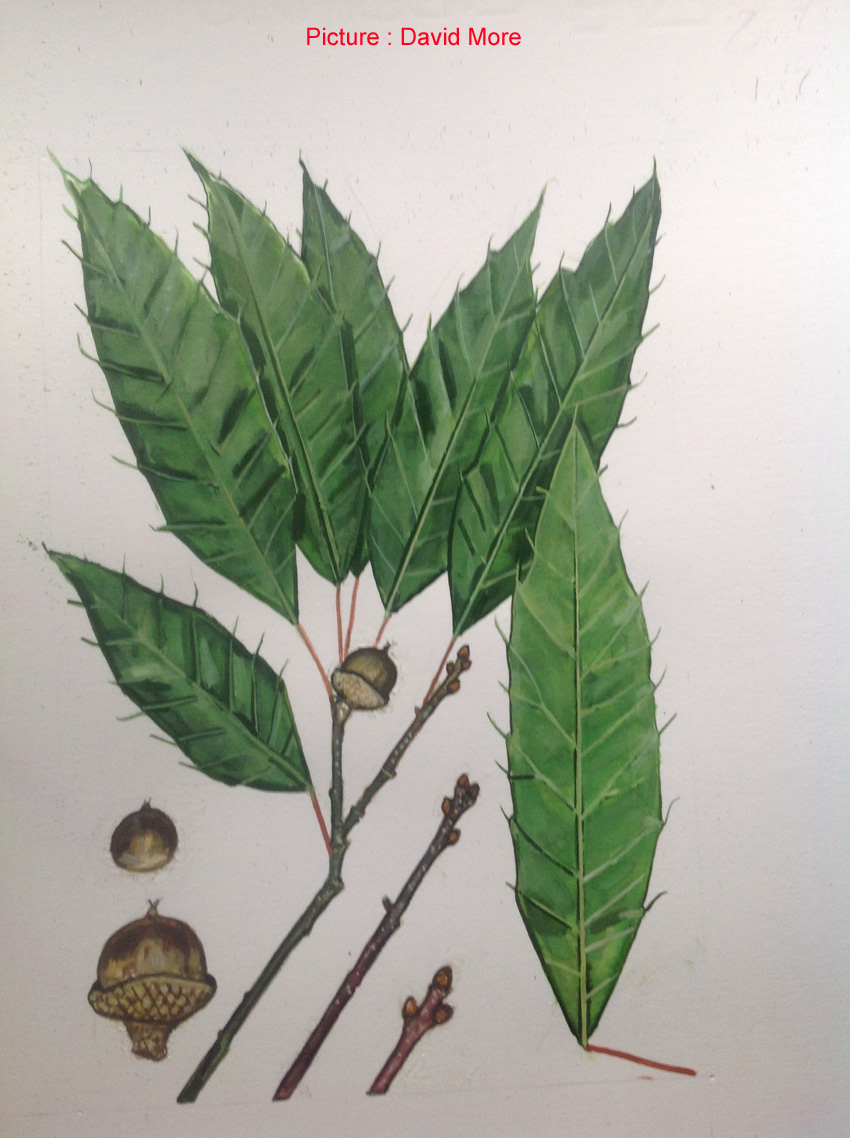| Quercus breedloveana | |
| Author | Nixon & Barrie 2017 |
| Synonyms | |
| Local names | |
| Range | Mexico (Chiapas, Guerrero); |
| Growth habit | to 20 m heigh and more; |
| Leaves |
9-21 cm x 2.4-6; narrowly elliptic or elliptic-lanceolate, 3-4 times as long as wide, very symmetrical; apex acuminate to caudate-acuminate, , sometimes slightly falcate, usually with a 1-5 mm long bristle; base cuneate or narrowly cuneate, or narrowly rounded-attenuate, sometimes oblique; margin undulate,with or without triangular teeth ending in a 1-4 mm long bristle, the number of bristle reaching 12 to 26 each side; adaxially glabrous, slightly lustrous, with flat veins; abaxially paler green, hairless or seldom with some axil tufts, with prominent veins; 6-14 vein pairs, straight and ascending, regularly spaced, terminating in a bristle except the lowermost ones; petiole 0.6-4 cm, red basally, glabrous; |
| Flowers | |
| Fruits |
acorn 1.4-1.7 cm long, 1.3-1.5 cm wide, glabrous or remotely puberulent; broadly ovoid or globose with a somewhat depressed apex; solitary or paired; cup turbinate enclosing 1/3 of acorn; fruit annual; |
|
Bark, twigs and |
twig 1-2 mm thick, terete, purple-red or grey, glabrous; lenticels usually not conspicuous; stipules deciduous; bud 2-3 mm, ovoid or globose, brown, glabrous, with a bluntly apex; |
| Hardiness zone, habitat | 1100-1800 m, in the cloud forest; |
| Miscellaneous | -- Sub-genus Quercus,
section Lobatae, series Erythromexicanae, Group Acutifoliae; -- Differs from Q. paxtalensis which has likely asymmetrical leaves, a round or truncate base, often longer petiole (2-4.5 cm) and ovoid-cylindrical acorns. It differs also from Q. cortesii which has shorter petioles (0.6-1.5 cm), and less bristle-tipped teeth, only on the apical 1/2. -- Resembles Q. xalapensis and Q. skinneri, but both have much larger acorns maturing in 2 years, and halfround cupules. |
| Subspecies and varieties |
|
| Pictures |
|

